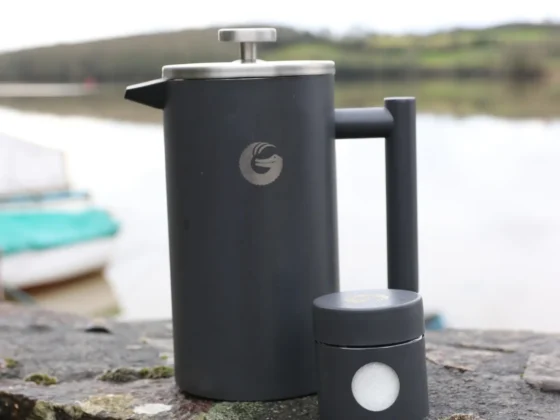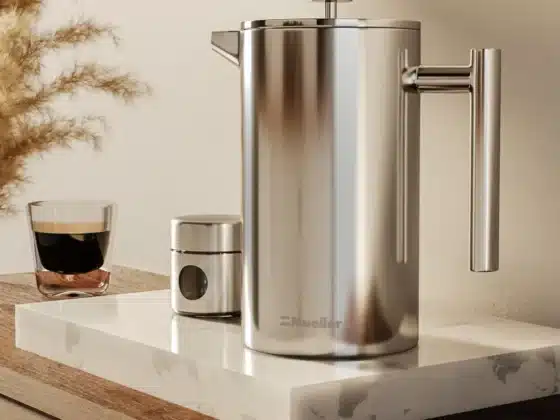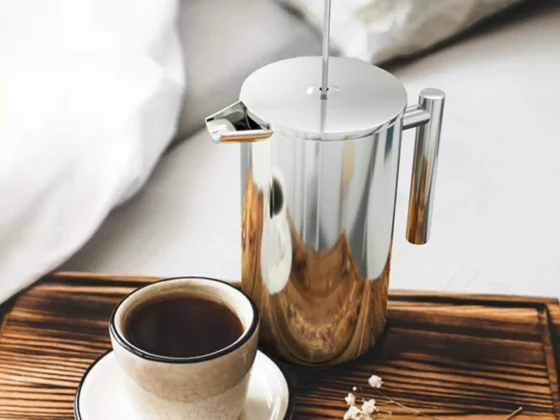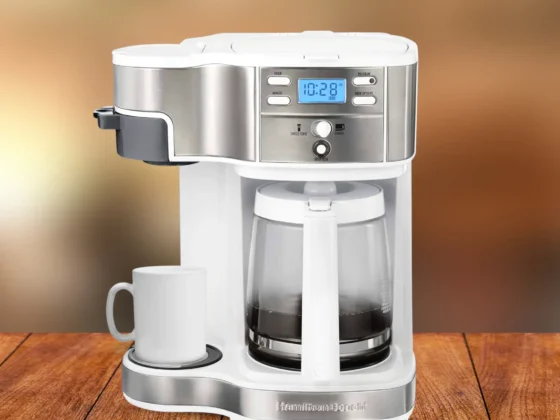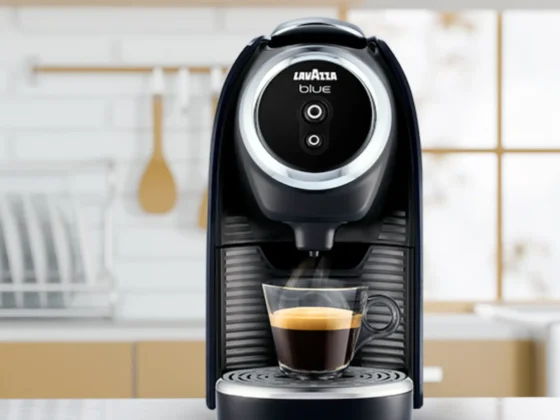Greetings, connoisseurs of coffee and devotees of the French press! If your quest involves finding the ultimate coffee for your beloved cafetière, then you’ve arrived at the optimal destination. Preparing coffee with a press is a cherished custom for many, and for good reason. This classic brewing technique produces a robust and full-bodied cup of coffee that accentuates the unique characteristics of the beans. However, not all coffee beans are created equally, and selecting the right ones is crucial for achieving that flawless cup of joe.
In this all-encompassing guide, we will divulge the secrets to a flawless brew by delving into the best coffee beans and blends for your press. We will explore the captivating world of coffee origins, roast levels, and grind size, providing expert insights into brewing methods, storage techniques, and much more. By the conclusion of your reading journey, you will possess the knowledge to elevate your coffee experience and indulge in each sip to its fullest potential.
So, let us embark on this flavorful odyssey and uncover the best coffee for French press that will tantalize your taste buds and revolutionize your daily coffee ritual.
Best Coffee for French Press: Key Takeaway
- Selecting the right coffee beans: Opt for high-quality beans with flavor profiles that align with your taste preferences. Some popular options include Ethiopian Yirgacheffe, Colombian Supremo, Brazilian Santos, Sumatra Mandheling, or Mexican Chiapas.
- Mastering the grind: Attain the ideal coarse grind size that’s suitable for coffee press brewing to facilitate optimal extraction and avoid over or under-extraction, which can adversely affect your coffee’s flavor.
- Perfecting the brewing process: Pay close attention to essential factors like water temperature, coffee-to-water ratio, and steeping time to optimize the extraction process and achieve a well-balanced and delicious brew.
- Proper coffee storage: Keep your coffee beans fresh by preserving them in an airtight, opaque container stored in a cool, dark, and dry location, away from heat sources and temperature fluctuations.
- Experiment and adjust: Don’t hesitate to experiment with various beans, grind sizes, brewing techniques, and coffee-to-water ratios to discover the perfect combination that suits your taste buds and unlocks the full potential of your French press coffee.
Understanding Coffee Beans: Origins and Roasts

To select the best coffee for the French press, it’s essential to comprehend the factors that contribute to the unique flavor profiles of coffee beans. The origin of the beans and the roast level play significant roles in determining the taste, aroma, and overall experience of your brewed coffee.
The Impact of Origin on Flavor Profiles
The geographical location where coffee beans are grown greatly influences their taste. Factors such as altitude, climate, soil composition, and processing techniques contribute to the development of distinct flavor profiles. Generally, coffee beans are sourced from three primary regions: Africa, Central and South America, and Asia-Pacific.
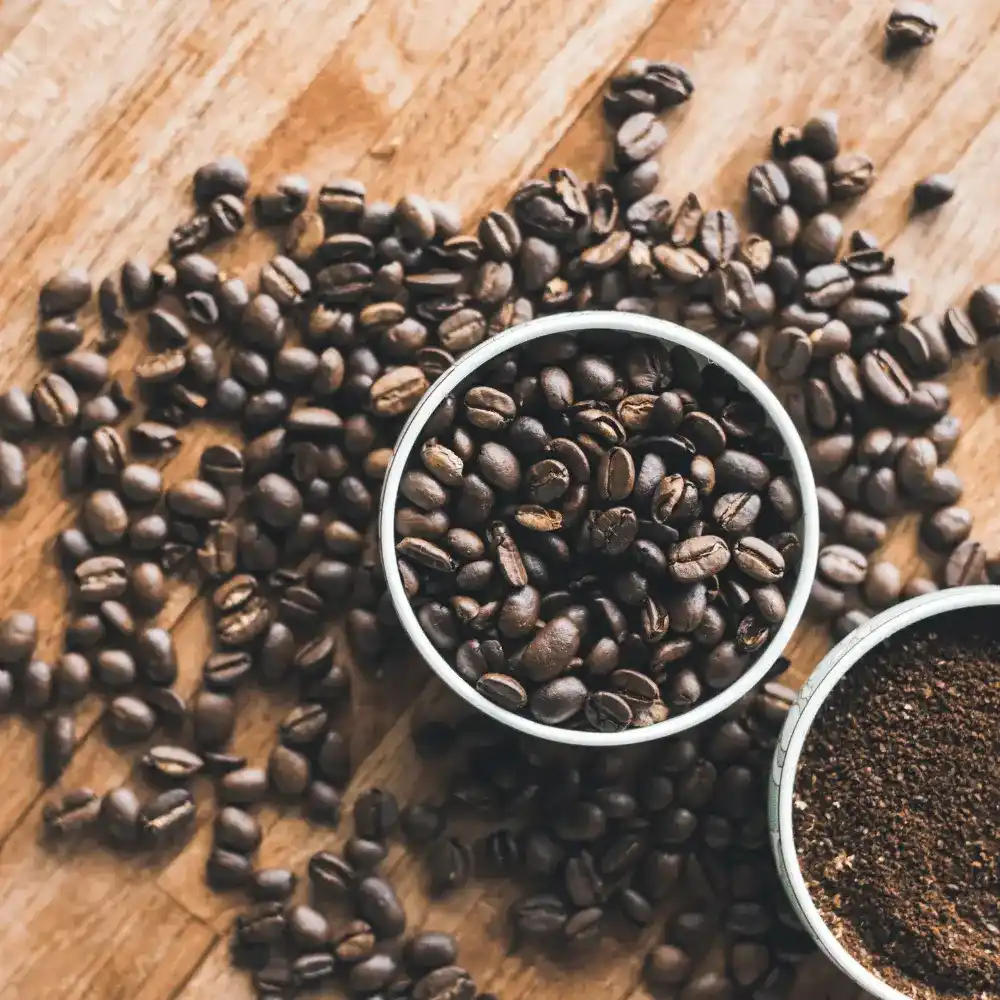
African coffees, like Ethiopian Yirgacheffe, tend to exhibit bright, fruity, and citrusy notes. Central and South American coffees, such as Colombian Supremo or Brazilian Santos, are known for their balanced flavors with hints of chocolate, nuts, and mild fruitiness. In contrast, coffees from the Asia-Pacific region, like Sumatra Mandheling, often boast earthy, spicy, and bold characteristics.
Understanding the flavor profiles associated with different origins can help you choose the best coffee for a French press that suits your personal taste preferences.
Roast Levels and Their Influence on Taste
The roast level is another crucial factor that affects the flavor of your coffee. Roasting transforms raw coffee beans into the fragrant, brown beans we all know and love. The process involves the application of heat, which results in chemical reactions that develop the beans’ flavor, aroma, and body.

There are four primary roast levels: light, medium, medium-dark, and dark. Light roasts exhibit brighter acidity, floral or fruity notes, and a lighter body. Medium roasts strike a balance between acidity and body, with more pronounced caramel or chocolate flavors. Medium-dark roasts have a bolder body, lower acidity, and more developed flavors like dark chocolate or roasted nuts. Lastly, dark roasts are characterized by their intense, smoky flavor, full body, and low acidity.
For the coffee press, medium to dark roasts are generally recommended, as they provide a richer body and more robust flavors that complement the brewing method.
Single-Origin vs. Blends: Which One to Choose?
When selecting the best coffee beans you’ll encounter both single-origin and blended options. Single-origin coffees come from one specific region, farm, or even a particular lot within a farm. They showcase the unique characteristics of their origin, allowing you to appreciate the distinct flavor profile associated with a specific location.
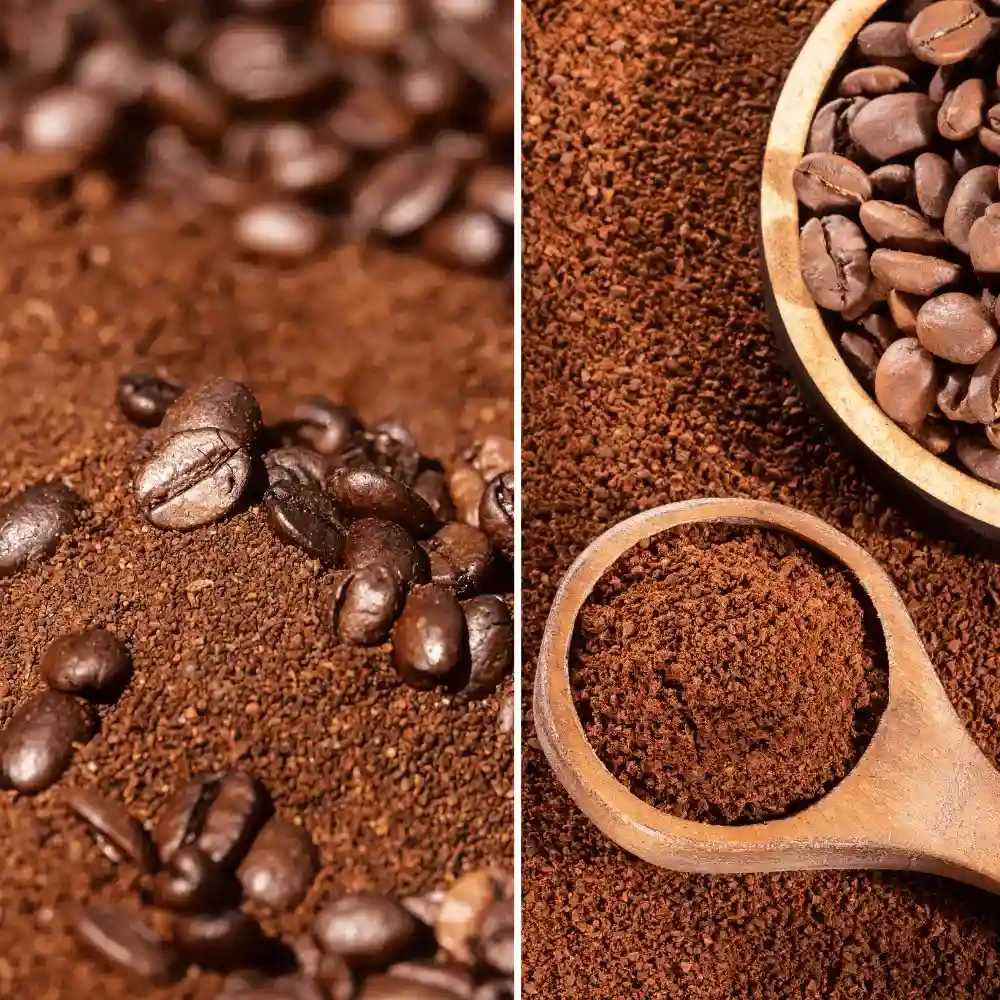
Blends, on the other hand, are a combination of beans from multiple origins, carefully crafted to achieve a harmonious balance of flavors, body, and acidity. A skilled roaster can create a blend that accentuates desirable attributes from each origin, resulting in a complex and satisfying cup.
There is no definitive answer to whether single-origin or blends are better for French press, as it ultimately depends on your taste preferences. Some people enjoy the purity of flavor and clarity found in single-origin coffees, while others appreciate the depth and complexity of a well-crafted blend. Experimenting with both types will help you determine which one suits your palate and makes the perfect French press coffee for you.
Top 5 Types of Coffee Beans for French Press
Selecting the perfect coffee beans for French press brewing can be a delightful exploration of various flavors and aromas. To help you on this journey, we have put together a list of our top 5 coffee beans that are exceptionally suitable for the cafetière method. Each coffee bean boasts a unique flavor profile that caters to different taste preferences, ensuring there’s something for everyone.
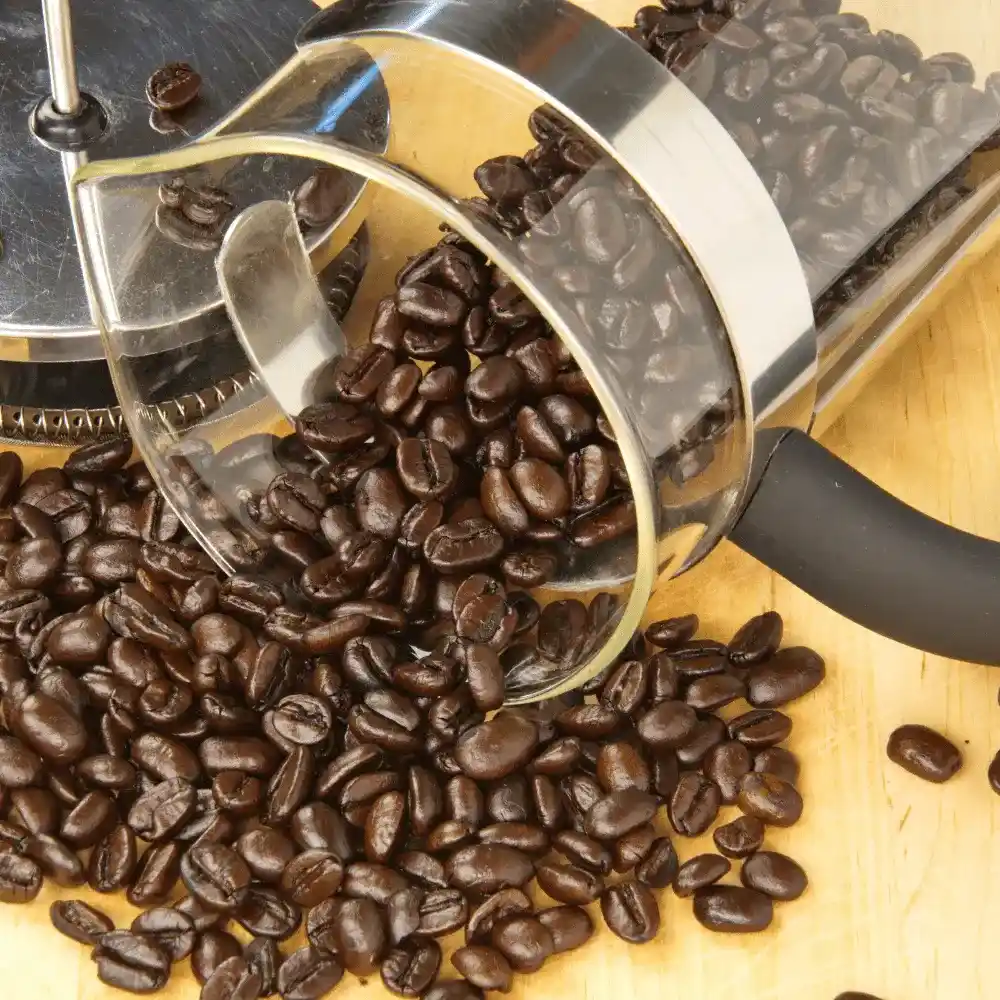
Ethiopian Yirgacheffe: Bright and Floral
Ethiopian Yirgacheffe, a single-origin coffee hailing from the birthplace of coffee, is renowned for its bright, fruity, and floral notes. This medium-roast coffee has a complex flavor profile with hints of lemon, blueberry, and blackberry, complemented by a wine-like acidity and a silky body. The press method enhances these delicate flavors, making it an excellent choice for those who enjoy a light and aromatic cup of coffee.
Colombian Supremo: Balanced and Smooth
Colombian Supremo is a classic choice for those seeking a well-balanced and smooth cup of coffee. Grown in the Andean highlands, this medium roast coffee features a mild acidity and medium body, accompanied by flavors of chocolate, caramel, and subtle fruitiness. Its versatility and crowd-pleasing taste make it an ideal candidate for French press brewing, resulting in a satisfying cup that appeals to a broad range of coffee drinkers.
Brazilian Santos: Nutty and Low Acidity
Brazilian Santos, one of the world’s most popular coffee exports, is known for its nutty flavor profile, low acidity, and hints of milk chocolate. This medium-dark roast coffee delivers a rich and robust taste that pairs perfectly with the coffee press method. The resulting brew is smooth, full-bodied, and ideal for those who enjoy a bold yet balanced cup of coffee.
Sumatra Mandheling: Earthy and Bold
Mandheling coffee, originating from the Indonesian island of Sumatra, is famous for its distinct earthy, spicy, and bold flavors. This dark roast coffee features a full body, low acidity, and complex notes of Toffee, Lemongrass, and Dried Fruit. When brewed using a cafetière, Sumatra Mandheling produces a rich and intense cup that caters to those who appreciate a more robust and unique coffee experience.
Mexican Chiapas: Complex and Sweet
Grown in the high-altitude regions of Chiapas, Mexico, this medium roast coffee is characterized by its complex flavor profile and natural sweetness. Mexican Chiapas features a bright acidity, medium body, and flavors that range from caramel and cacao to hints of tropical fruit. This brewing method enhances these nuances, making it an excellent option for those who enjoy a sweet and intricate cup of coffee with plenty of depth.
The Art of Coffee Grinding for French Press
Achieving the perfect cup of French press coffee is not only about selecting the finest beans; it also requires mastery of the grinding process. The coffee grind size plays a crucial role in determining the extraction rate, which directly affects the flavor and strength of your brew. In this section, we’ll explore the significance of grind size, how to find the ideal grind for the cafetière, and the best coffee grinders for consistency and precision.
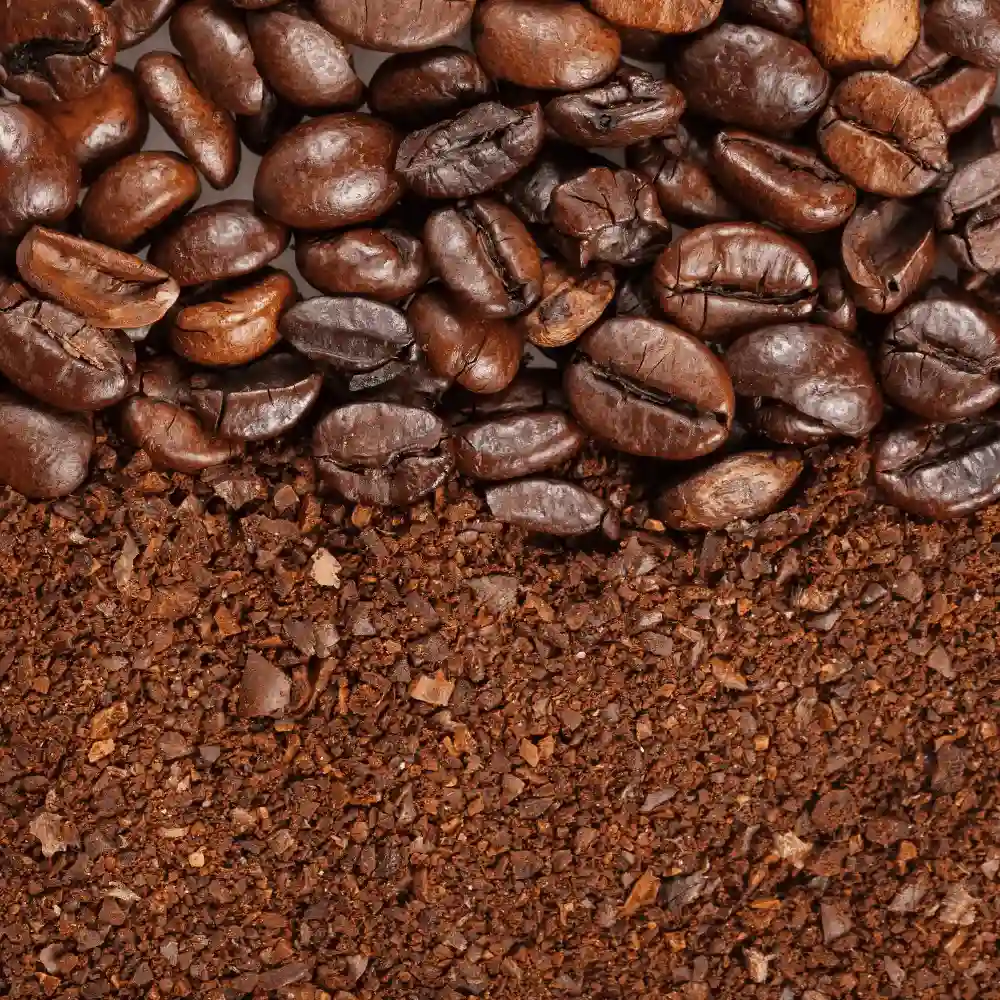
Why Grind Size Matters
Grind size is an essential factor in coffee brewing because it influences the extraction process, where water dissolves the flavors, aromas, and soluble compounds in the coffee grounds. A finer grind exposes more surface area, allowing for faster extraction, while a coarser grind has less surface area, resulting in a slower extraction.
Incorrect grind size can lead to over-extraction or under-extraction, resulting in a suboptimal coffee experience. Over-extraction occurs when too much coffee flavor is extracted, leading to a bitter and harsh taste. Conversely, under-extraction results in weak and sour coffee, as not enough flavor compounds are dissolved.
Finding the Ideal Grind Size for French Press
The French press brewing method calls for a coarse grind, which allows for proper extraction during the longer steeping time. (1) A grind that’s too fine will result in over-extraction, causing bitterness and potentially clogging the mesh filter. On the other hand, a grind that’s too coarse may lead to under-extraction, resulting in a weak and watery brew.
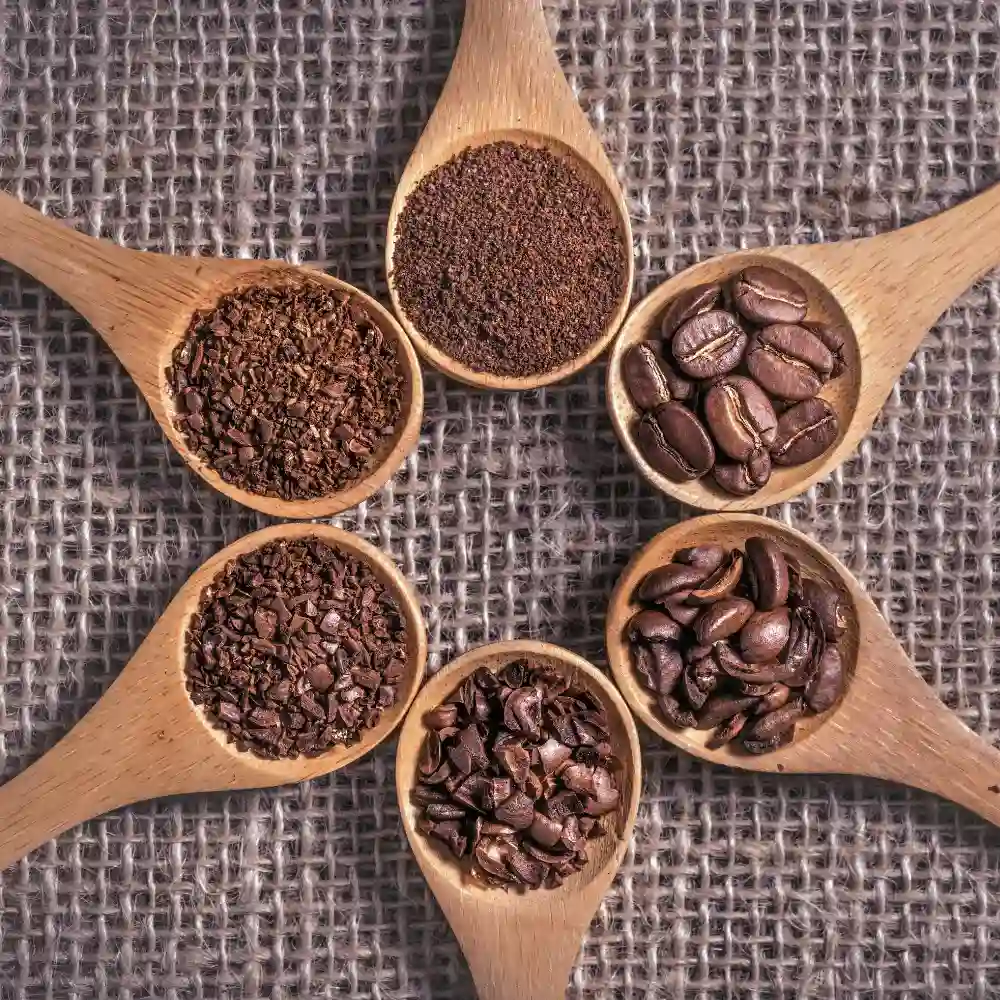
A proper French press grind should resemble coarse sea salt or breadcrumbs in texture. To achieve this, adjust your grinder accordingly, and experiment until you find the perfect balance. Remember that factors like bean type, roast level, and freshness can also affect the ideal grind size, so don’t hesitate to make adjustments to suit your specific beans.
Best Coffee Grinders for Consistency and Precision
A high-quality coffee grinder is essential for achieving the ideal grind size for the coffee press. Consistency and precision are crucial factors to consider when selecting a grinder. Burr grinders, either conical or flat, are the preferred choice for many coffee enthusiasts, as they provide a more uniform and precise grind compared to blade grinders.
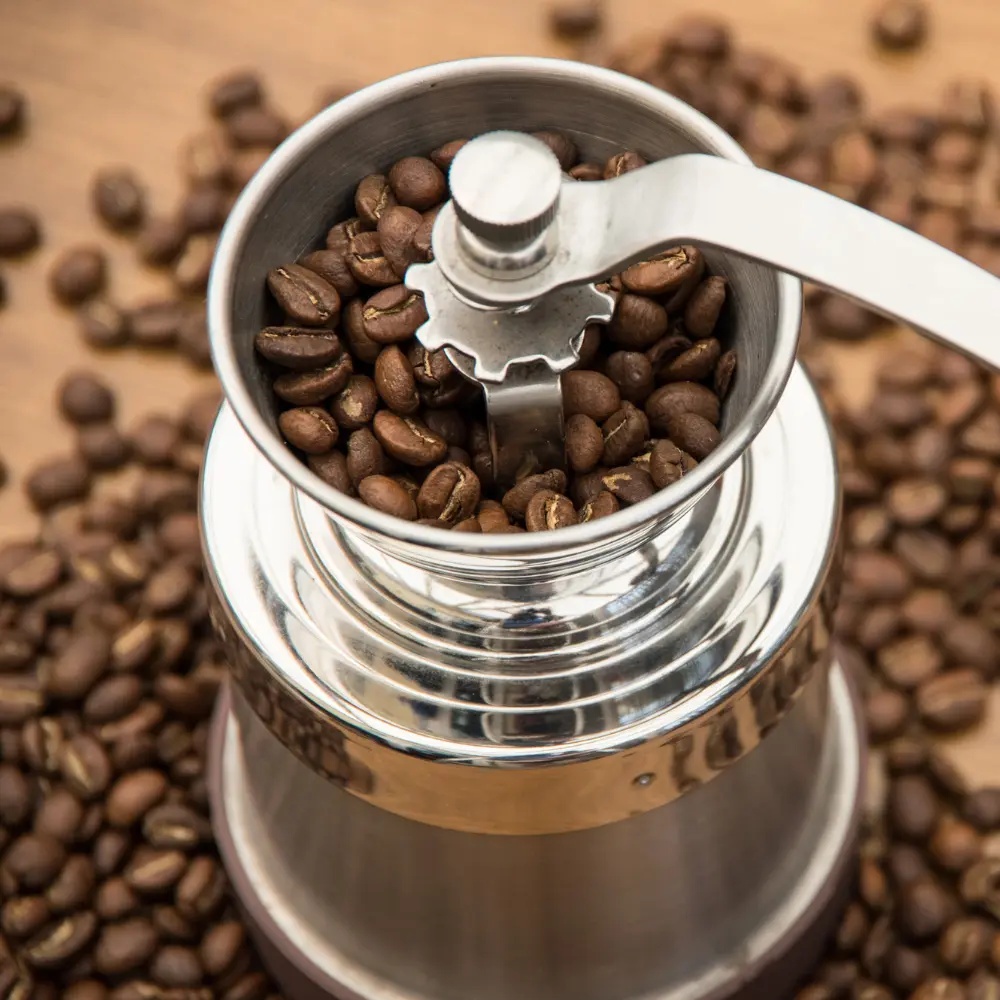
Manual burr grinders are a budget-friendly option, offering control and consistency, though they can be time-consuming and labor-intensive. Electric burr grinders, on the other hand, provide convenience and speed while maintaining grind quality. Some popular burr grinder models for the press include the Baratza Encore, OXO Brew Conical Burr Grinder, and the Hario Skerton Pro.
Investing in a high-quality grinder will not only help you achieve the perfect grind size for the coffee press but also elevate your overall coffee experience, allowing you to enjoy a consistently delicious and well-balanced brew every time.
Brewing Techniques to Enhance Your French Press Experience
To truly unleash the full potential of the best coffee for the coffee plunger, it is paramount to master the art of brewing. It is important to note that the way you brew your coffee has a tremendous impact on its final taste, aroma, and quality. In this section, we will delve into the intricacies of water temperature, coffee-to-water ratio, steeping time, and plunging techniques, which will help you elevate your cafetière experience to an unprecedented level.

The Importance of Water Temperature
The significance of water temperature in the extraction process cannot be overstated, as it plays a pivotal role in determining the efficacy and efficiency of coffee compounds’ dissolution. If the water temperature is too high, it can trigger over-extraction, leading to an undesirable burnt taste. On the other hand, if it is too low, under-extraction is inevitable, resulting in a bland and insipid flavor.
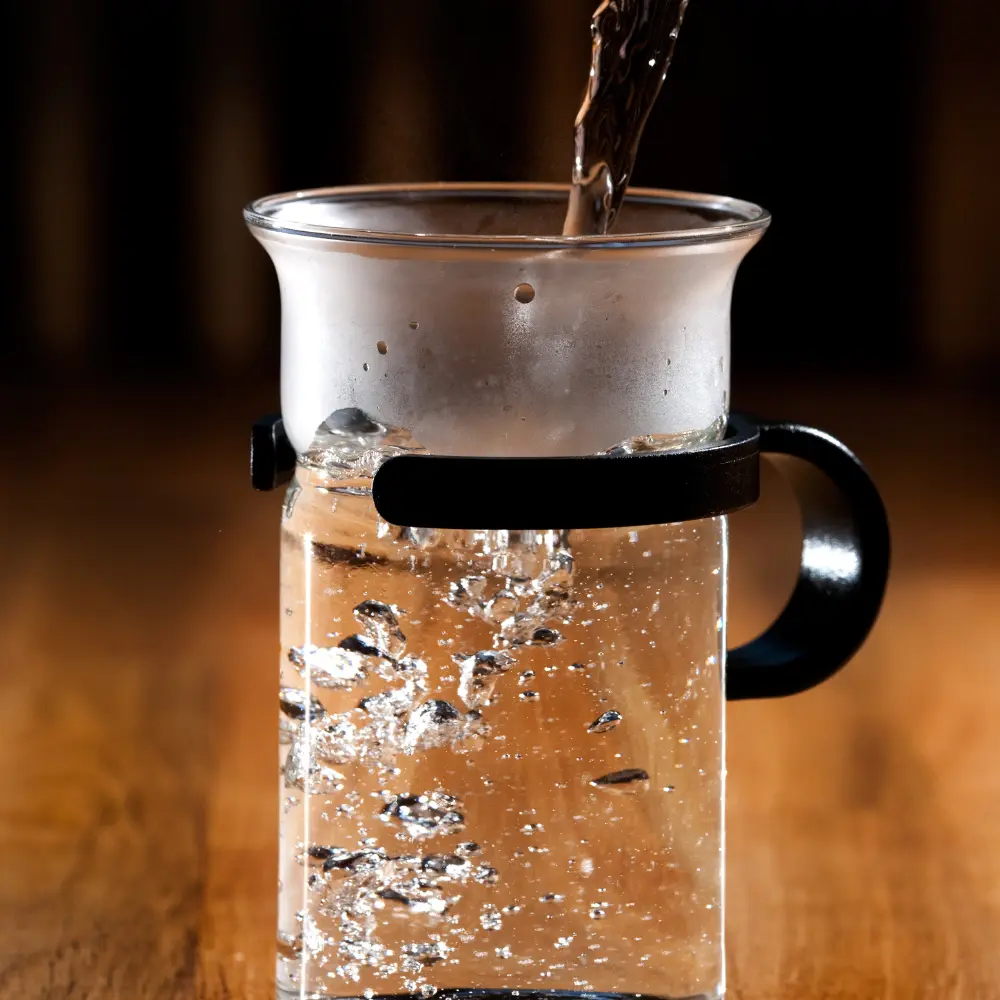
To attain the optimal extraction with a French press coffee maker, it is recommended to maintain a water temperature between 199°F to 205°F (93°C to 96°C). This temperature range can be achieved by utilizing a variable temperature kettle or by letting the water rest for approximately 30 seconds after boiling it before pouring it over the coffee grounds.
Employing water within this temperature range enables you to extract the complete range of flavors from your coffee, culminating in a perfectly balanced and delectable brew. It is an indispensable factor that should never be overlooked when seeking to enhance your coffee press experience.
Mastering the Coffee-to-Water Ratio
Apart from water temperature, the coffee-to-water ratio is another fundamental aspect that significantly influences the final taste of your press coffee. Achieving the correct ratio is imperative for obtaining an impeccable cup of coffee that caters to your unique taste buds.
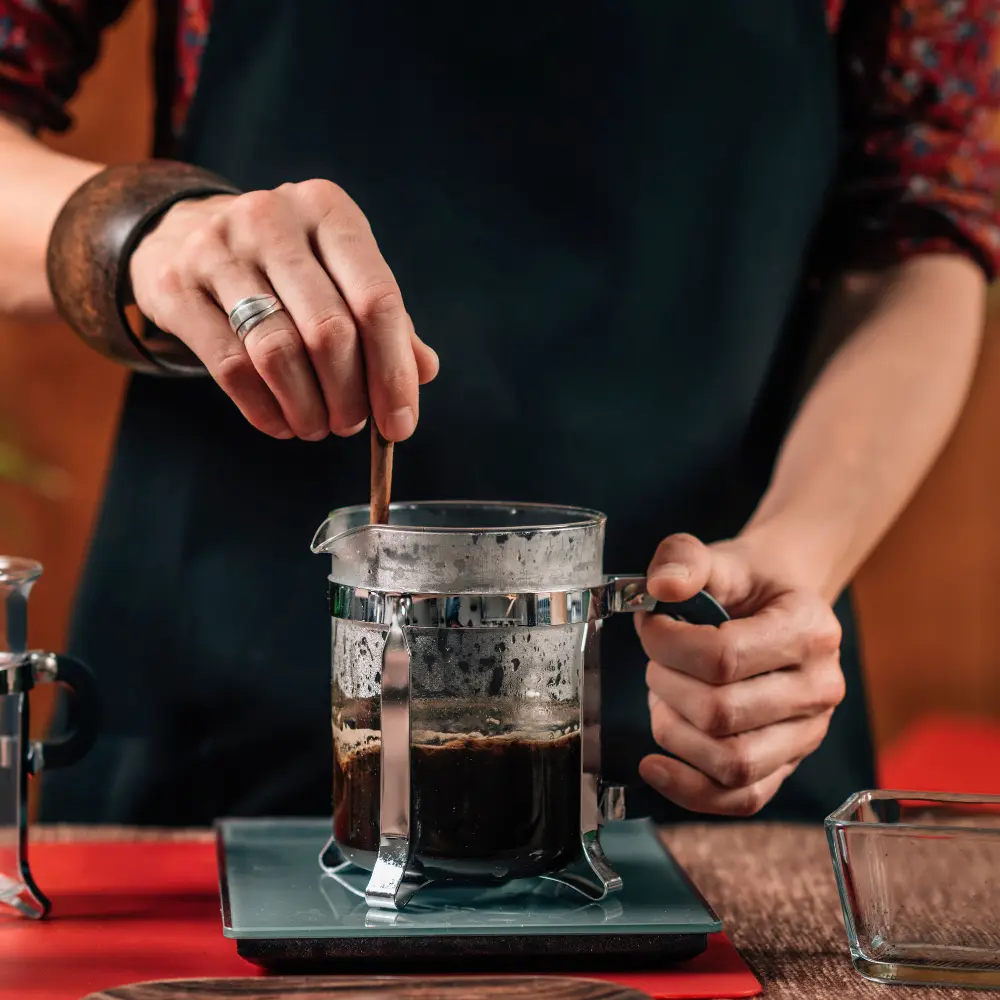
The generally accepted coffee-to-water ratio for French press brewing is 1:15. This implies that you should use one gram of coffee per 15 grams of water. However, it is essential to keep in mind that personal preferences can differ, and adjusting the ratio accordingly can result in a customized and more satisfying coffee experience.
Steeping Time and Plunging Techniques
In addition to water temperature and coffee-to-water ratio, steeping time and plunging techniques also play a significant role in achieving the perfect brew. The steeping time should ideally range between 3 to 4 minutes, depending on the grind size of your coffee. If the coffee grounds are coarser, the steeping time should be longer, and if they are finer, it should be shorter.

When it comes to plunging, it is recommended to employ a slow and steady approach, exerting gradual and consistent pressure. This will result in a smoother and richer brew, as opposed to using excessive force or haste, which can cause the coffee grounds to over-extract, resulting in a suboptimal coffee experience.
In conclusion, mastering the brewing technique is crucial when aiming to elevate your coffee press experience. Factors such as water temperature, coffee-to-water ratio, steeping time, and plunging techniques are all critical in achieving a well-balanced and delicious cup of coffee that caters to your unique preferences. By implementing the guidelines outlined in this section, you will undoubtedly take your cafetière experience to a whole new level.
Storing Coffee Beans for Optimal Freshness
To truly appreciate the best coffee for French press, it’s essential to maintain the freshness of your coffee beans. Proper storage is key to preserving the flavor, aroma, and overall quality of your beans. In this section, we’ll discuss proper storage containers, the impact of light, air, and temperature on coffee beans, and how long coffee beans stay fresh.

Proper Storage Containers
Choosing the right storage container is crucial for maintaining the freshness of your coffee beans. A proper storage container should be airtight, opaque, and made of a non-reactive material like glass, ceramic, or stainless steel. An airtight seal prevents oxygen from reaching the beans, while an opaque container protects them from light exposure.

Avoid using clear containers or storing coffee in its original packaging, as these options do not provide adequate protection against air and light. Specialty coffee storage containers, like the Airscape or Coffee Gator, are designed specifically for preserving coffee freshness and make excellent investments for coffee enthusiasts.
The Impact of Light, Air, and Temperature
Light, air, and temperature all have the potential to compromise the freshness of your coffee beans. Exposure to light, especially sunlight, can cause the beans to deteriorate quickly, leading to a loss of flavor and aroma. Oxygen, on the other hand, causes coffee beans to go stale through a process called oxidation, which can result in a flat and lifeless taste.

Temperature fluctuations can also harm your coffee beans, as they can cause condensation and promote the growth of mold and bacteria. To prevent this, store your coffee beans in a cool, dark, and dry place, such as a pantry or cupboard. Avoid storing coffee near heat sources, like stoves or ovens, or in areas prone to temperature fluctuations, like the refrigerator or freezer.
How Long Do Coffee Beans Stay Fresh?
Coffee beans have a limited shelf life, and their freshness decreases over time. While the exact duration can vary depending on factors like the roast level and the quality of the beans, most coffee beans are considered fresh for about 2 to 4 weeks after roasting.

To enjoy the best coffee, it’s advisable to purchase freshly roasted beans from a reputable roaster and consume them within this time frame. When buying coffee, look for a roast date rather than a “best by” date, as this will give you a more accurate idea of the beans’ freshness.
By storing your coffee beans properly and using them within their optimal freshness window, you can ensure that you’re brewing the most flavorful and aromatic cup of coffee possible.
Conclusion
In conclusion, the pursuit of the ideal coffee for French press entails delving into the intricate nuances of coffee beans’ provenance and roasting techniques, identifying premium-grade beans, and mastering the art of grinding, brewing, and preservation. By meticulously taking into account factors such as the granularity of the grind, water temperature, the coffee-to-water ratio, steeping time, and proper storage, one can unlock the enigmas behind a flawless brew and advance one’s coffee press experience. Do not hesitate to venture into uncharted territories by experimenting with various beans, ratios, and techniques to uncover the singular flavors and aromas that cater to your taste preferences. With devotion and practice, the path to relishing consistently exceptional cups of coffee will soon unfold before you.
FAQ
How coarse should coffee be ground for French press?
The granularity of coffee grounds ought to be coarsely akin to sea salt or breadcrumbs. This granulation is optimal for the French press methodology.
What is the ideal coffee-to-water ratio for French press?
The ideal coffee-to-water ratio for the coffee press is generally 1:15, signifying that for every 1 gram of coffee, one should use 15 grams of water. However, such a ratio is not immutable, as it may vary based on individual preference.
How long should I steep coffee in a French press?
The recommended duration for coffee steeping in a cafetière is generally between 4 to 5 minutes. Nevertheless, one can adjust this time interval to their liking and depending on the specific coffee beans that one employs.
How should I store my coffee beans for maximum freshness?
The optimal manner to store coffee beans entails placing them in an airtight, opaque container forged from non-reactive materials, such as glass, ceramic, or stainless steel. Additionally, the beans ought to be stored in a cool, obscure, and arid location, away from heat sources and temperature fluctuations.




















































